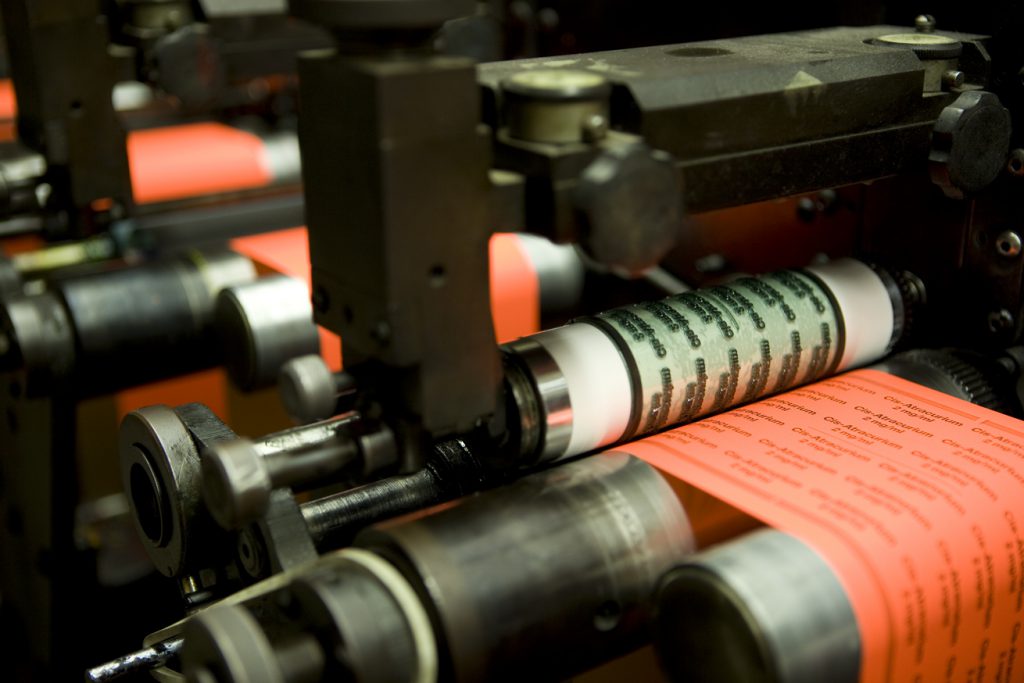In the realm of flexographic printing, maintaining the appropriate viscosity control in flexo inks is a critical factor that can significantly influence print quality and efficiency. As marketing professionals delve deeper into the complexities of printing, understanding the nuances of viscosity control becomes imperative. The control of ink viscosity not only impacts the color consistency but also the drying time and adhesion properties of the print.

Understanding Flexographic Printing
Flexographic printing, or flexo, is a method that uses a flexible relief plate. It’s popular in packaging and labeling due to its ability to print on a variety of substrates. For those unfamiliar, flexographic printing is a versatile and efficient printing process. For a comprehensive understanding, you might explore more on flexographic printing techniques.
The Role of Viscosity in Flexo Inks
Viscosity refers to the thickness or thinness of an ink and its ability to flow. It is crucial because it affects how the ink transfers from the press to the substrate. In flexographic printing, viscosity control ensures that ink flows uniformly, preventing defects such as color variation, streaking, and improper drying.
Challenges in Maintaining Viscosity
Maintaining consistent viscosity can be challenging due to factors like temperature fluctuations, evaporation of solvents, and the interaction of ink with different substrates. These challenges necessitate continuous monitoring and adjustments during the printing process to ensure optimal results.
Methods of Viscosity Control
Several techniques can be employed to maintain viscosity control in flexo inks:
- Viscometers: These devices measure the viscosity of ink in real-time, allowing for immediate adjustments.
- Temperature Control Systems: By maintaining a stable temperature, these systems prevent viscosity fluctuations caused by environmental changes.
- Automatic Ink Dispensing Systems: These systems adjust the ink formulation dynamically to maintain consistent viscosity.
Importance of Regular Monitoring
Regular monitoring of ink viscosity ensures high print quality and reduces waste. It also minimizes downtime by preventing the need for frequent press adjustments.
Impact on Print Quality
The impact of viscosity on print quality cannot be overstated. Proper viscosity control leads to sharper images, consistent colors, and better overall print quality. Conversely, poor viscosity control can result in defects that compromise the integrity of the final product.
Technological Innovations in Viscosity Control
Advancements in technology have introduced innovative solutions for viscosity control in flexo inks. Automated systems are now capable of real-time adjustments, ensuring that ink viscosity remains within the desired range throughout the printing process.
Future Trends
The future of viscosity control in flexo inks is likely to see further integration of artificial intelligence and machine learning. These technologies can predict and adjust ink viscosity based on historical data and real-time inputs, enhancing the efficiency and effectiveness of the printing process. For insights on how AI is shaping printing technologies, check out this discussion on AI in flexographic.
Case Studies: Success Stories
Several companies have successfully implemented advanced viscosity control systems, resulting in significant improvements in print quality and production efficiency. These case studies highlight the importance of investing in modern viscosity control systems for competitive advantage in the printing industry.
Conclusion
In conclusion, viscosity control in flexo inks is a vital aspect of the printing process that significantly influences print quality and operational efficiency. By adopting modern techniques and technologies for viscosity control, companies can ensure consistent quality and meet the evolving demands of the market. For a deeper understanding of the latest trends and technologies in flexographic printing, consider exploring resources on printing market trends.

FAQs
What is viscosity control in flexo inks?
Viscosity control in flexo inks refers to the management of ink consistency to ensure it flows and adheres properly during the printing process.
How does viscosity affect print quality?
Ink viscosity affects print quality by influencing color consistency, image sharpness, and drying time. Proper control ensures high-quality prints.
What are common methods for controlling ink viscosity?
Common methods include using viscometers, temperature control systems, and automatic ink dispensing systems to maintain consistent viscosity.






